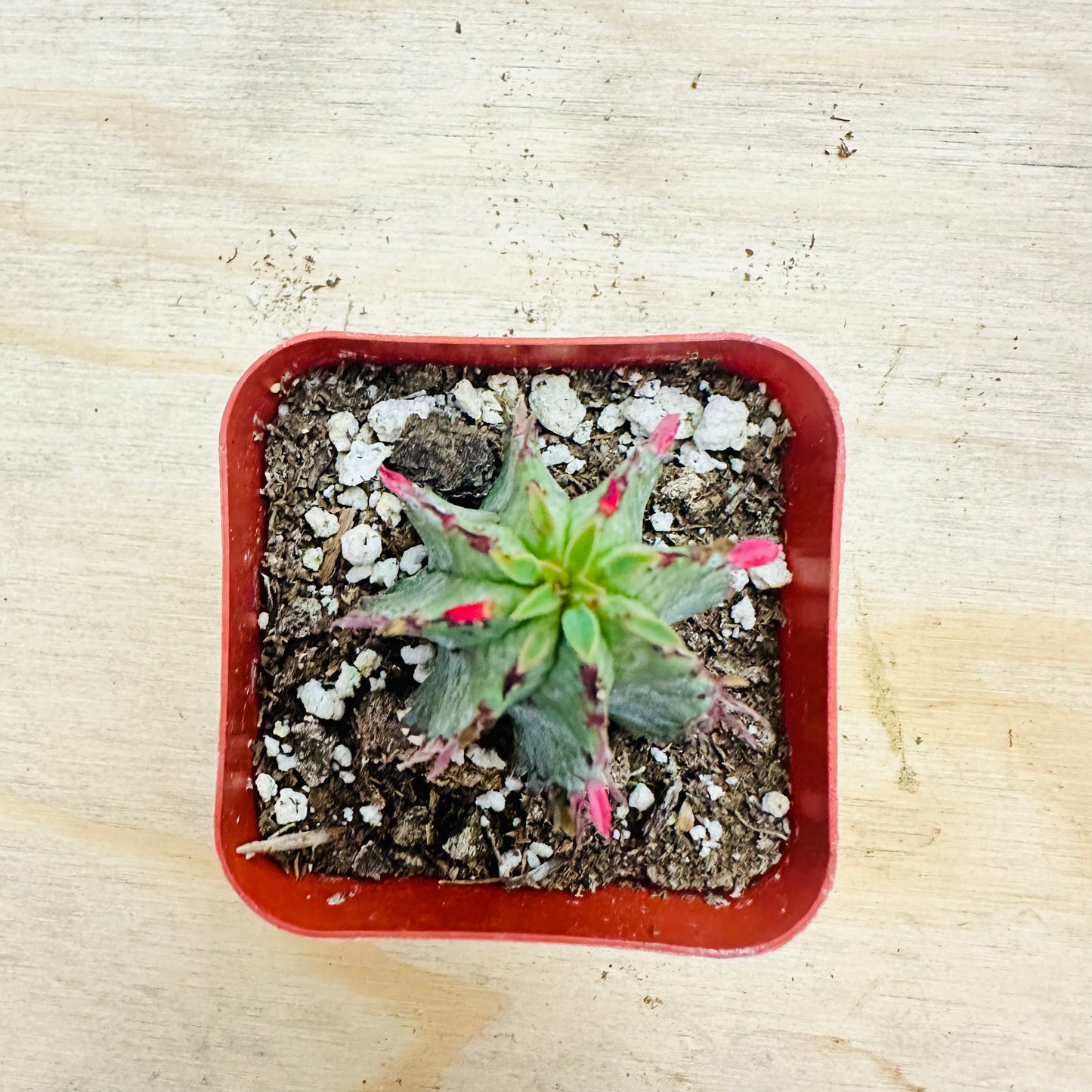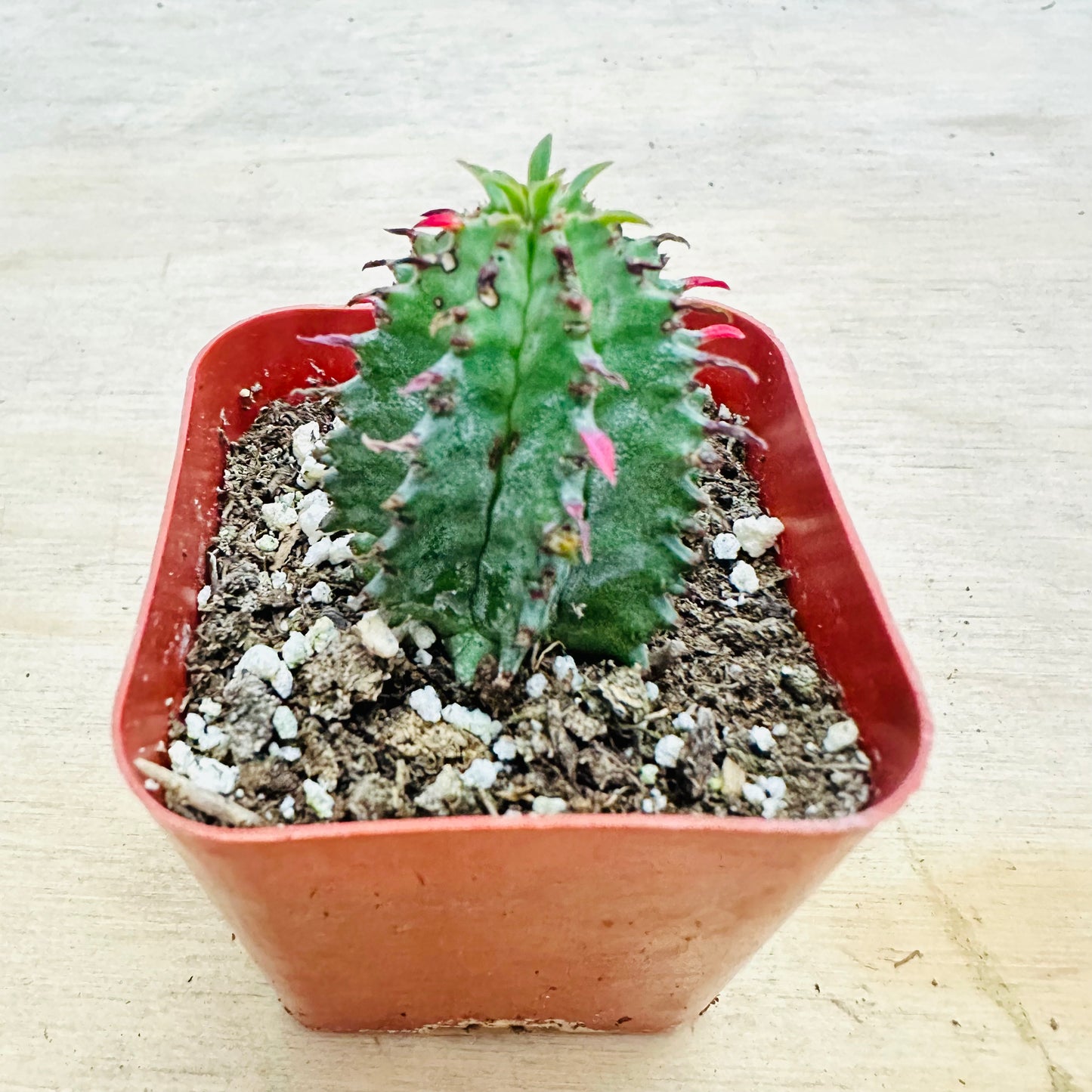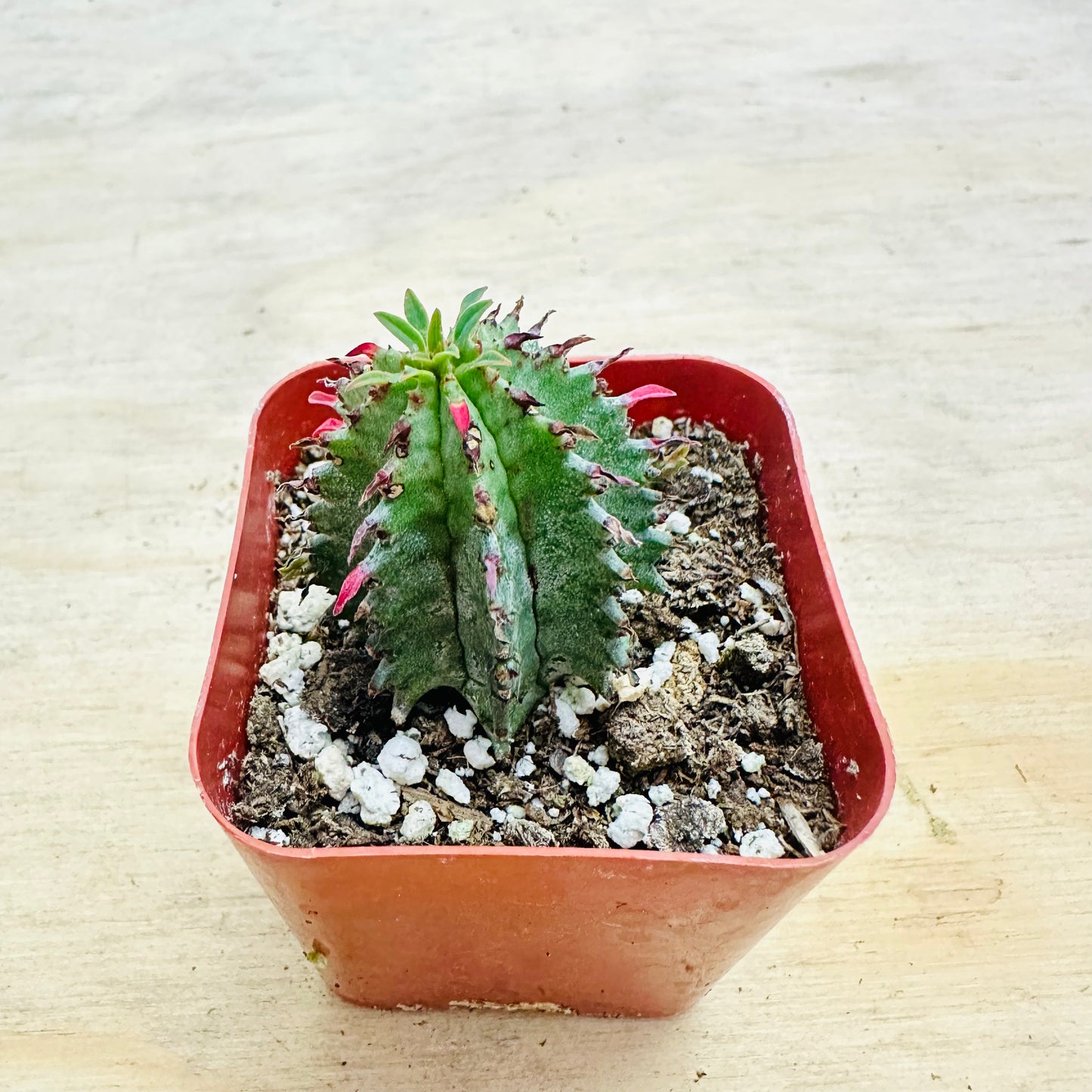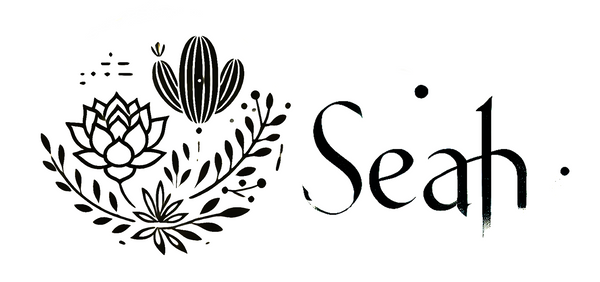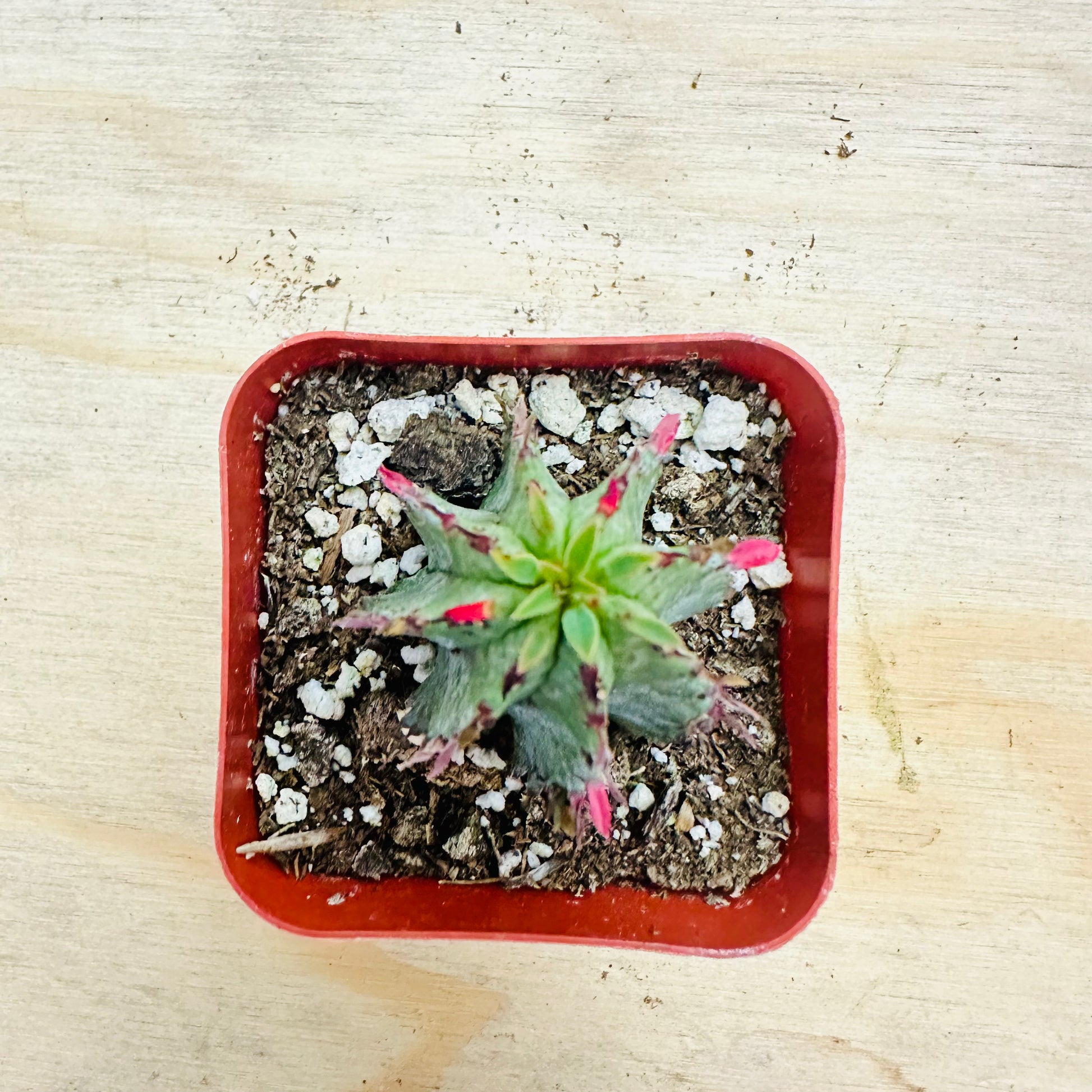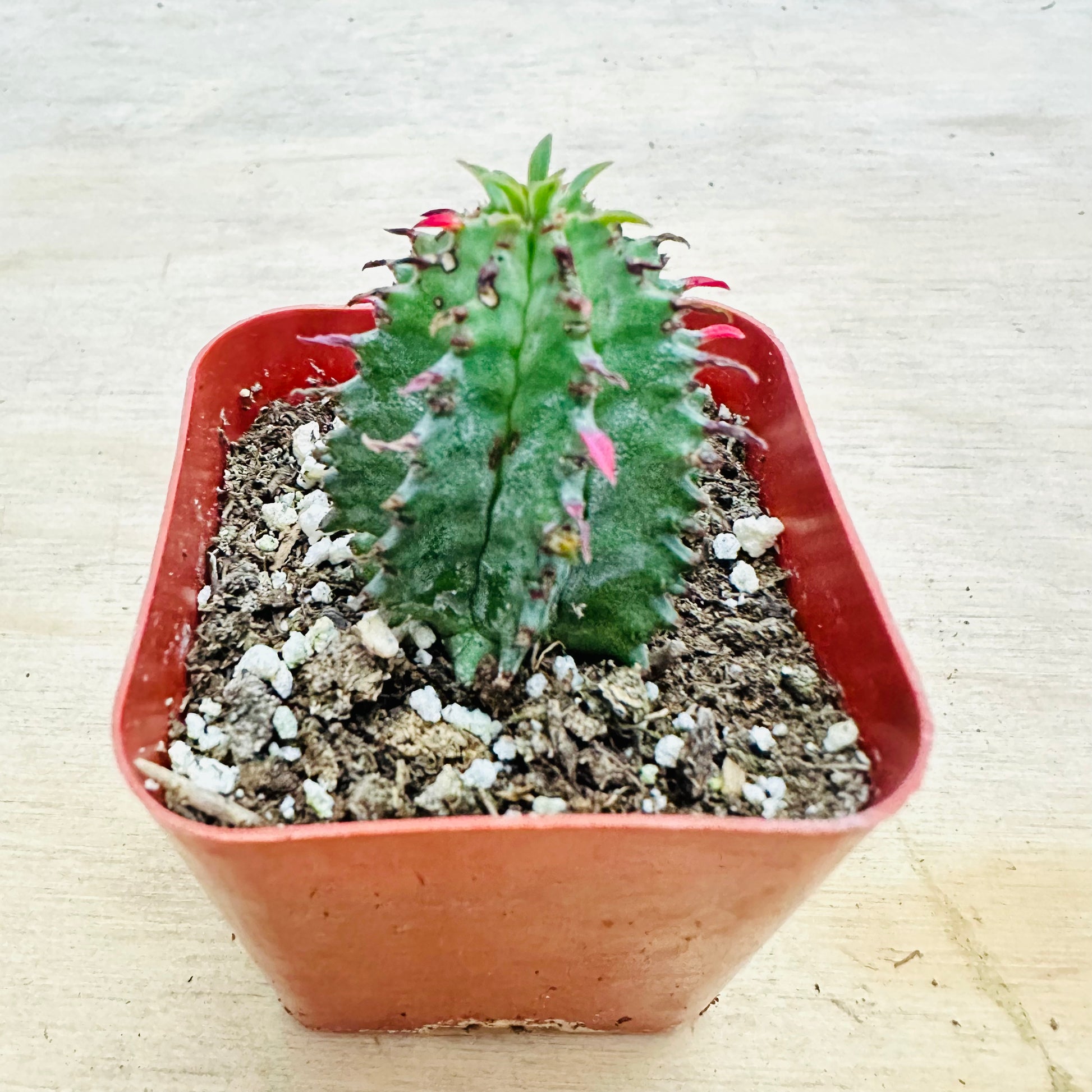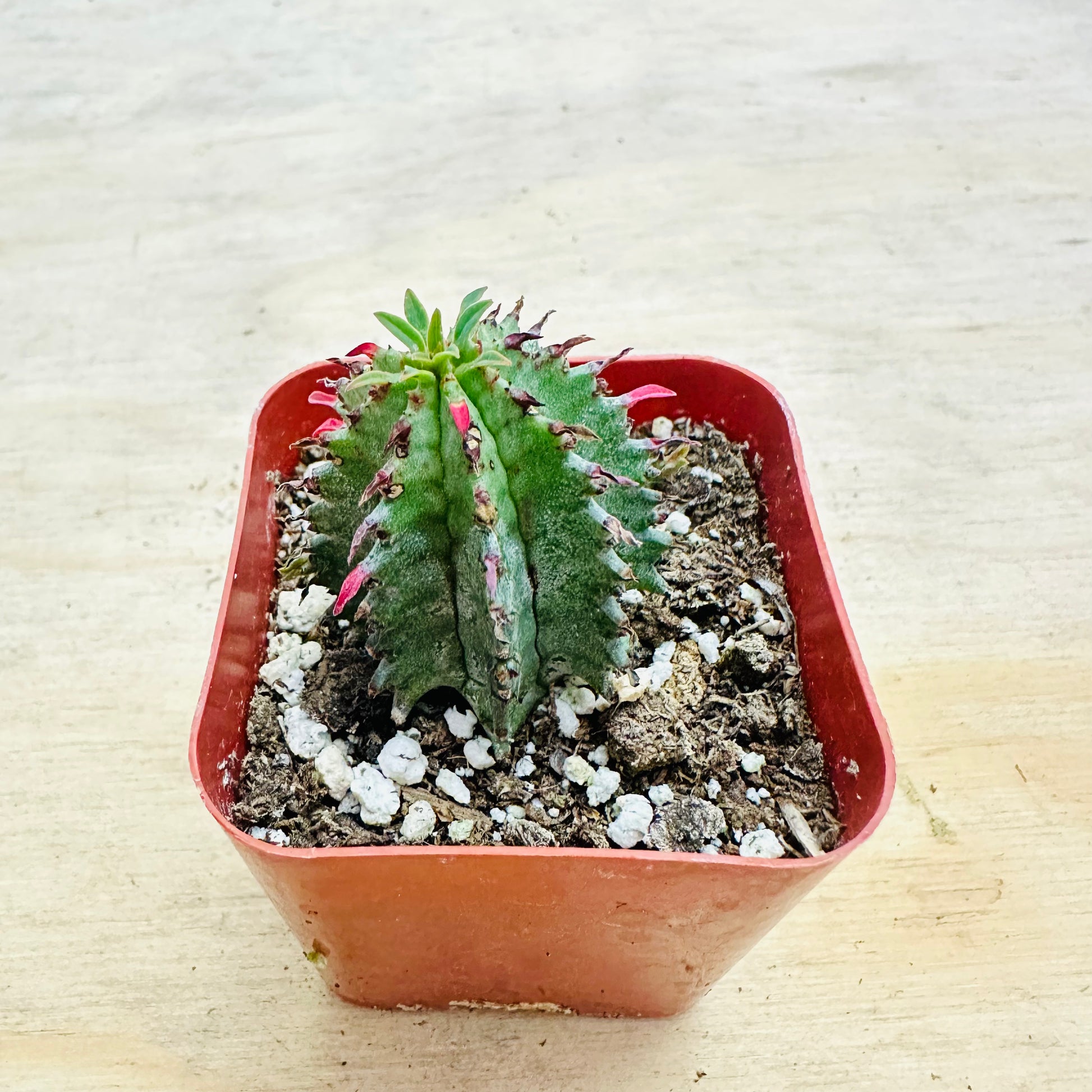Euphorbia mammillaris
Euphorbia mammillaris
In stock
Couldn't load pickup availability
📝 Description
**Morphological Characteristics**
Euphorbia mammillaris, commonly known as "Indian Corn Cob" or simply "Corncob Euphorbia," is a distinctive succulent species in the Euphorbiaceae family. Native to South Africa, this plant is recognized for its unique, chunky, segmented stems that resemble a cluster of corn cobs.
The stems are erect, green to blue-green, and adorned with prominent conical tubercles arranged along vertical ribs. Mature stems can reach heights of 15-30 cm (6-12 inches) and are about 2-4 cm (0.8-1.6 inches) in diameter. Small, paired spines emerge from each tubercle, typically reddish when young and fading to gray over time. During the growing season, Euphorbia mammillaris produces tiny, bright yellow to greenish cyathia (specialized euphorbia flowers) at the tips of the stems, adding a subtle ornamental touch.
**Growth Habits**
Euphorbia mammillaris grows relatively quickly compared to many other succulents, forming dense clumps of upright, columnar stems. Over time, it can create an impressive, shrubby mound that is ideal for container gardening, succulent displays, or xeriscaping. The plant's robust growth and architectural form make it a favorite among succulent collectors.
**Maintenance Points**
• Lighting: Prefers full sun to bright, indirect light. Outdoor plants should be placed in a sunny location with some afternoon shade in extremely hot climates. Indoors, a bright window with plenty of light is necessary.
• Watering: Water moderately during the active growing season (spring and summer), allowing the soil to dry out completely between waterings. In fall and winter, reduce watering significantly as the plant enters dormancy. Overwatering can easily cause root rot.
• Soil: Requires a very well-draining cactus or succulent mix. Adding coarse sand, pumice, or perlite enhances drainage.
• Temperature: Thrives in temperatures between 20-30°C (68-86°F). It is sensitive to frost and should be protected from temperatures below 5°C (41°F).
• Fertilization: Feed sparingly during the growing season with a diluted, low-nitrogen fertilizer formulated for succulents and cacti. Avoid fertilizing during dormancy.
• Potting: Use pots with excellent drainage. Repot every 2-3 years to refresh the soil and encourage healthy growth.
• Humidity: Prefers dry conditions. Good airflow is important to minimize the risk of fungal infections.
**Reproduction Method**
Euphorbia mammillaris can be propagated by stem cuttings and seeds.
1. **Stem Cuttings:**
• Selection: Use a clean, sharp knife to cut a healthy stem.
• Handling Sap: Euphorbia sap is toxic and can irritate skin and eyes. Always wear gloves and handle with care.
• Callusing: Allow the cutting to dry and callus over for several days in a shaded, dry area.
• Planting: Insert the callused cutting into a well-draining soil mix. Water lightly after a few days.
2. **Seeds:**
• Sowing: Sow seeds on the surface of a sterile, well-draining mix.
• Germination: Keep the soil lightly moist and maintain temperatures between 21-27°C (70-80°F).
• Transplanting: Once seedlings are large enough to handle, transplant them into individual pots.
**Additional Tips**
• Safety Note: The white latex sap is toxic and can cause irritation. Avoid contact with skin and eyes and keep the plant away from pets and children.
• Pest Control: Watch for common pests such as mealybugs, aphids, and spider mites. Treat infestations early with neem oil or insecticidal soap.
• Disease Prevention: Ensure excellent drainage and avoid excessive watering to prevent root rot.
• Display: Its chunky, upright stems and architectural form make it ideal for adding vertical interest to succulent arrangements and modern garden designs.
With its unique texture, ease of care, and rapid clumping habit, Euphorbia mammillaris is a standout succulent that offers both visual appeal and low-maintenance charm for indoor and outdoor gardens.
🌿 Care Tips
Plant Care
Light
Water
Soil
Temperature
🌟 Note: It’s normal for succulents to appear slightly shriveled after shipping. They usually recover within a few days in a suitable environment.
📦 Shipping Info
Seah Shipping Policy
Effective Date: November 2025
This Shipping Policy applies to orders delivered within the continental United States (the lower 48 states). By purchasing from Seah, you agree to the terms below.
1) Shipping Cost & Free Shipping
- Automatic rate calculation: Shipping is calculated at checkout based on weight, destination ZIP and carrier rates.
- Free Standard Shipping: Orders $59+ (pre-tax, after discounts) ship free to the lower 48 states.
- Alaska, Hawaii, Puerto Rico & other territories: Not eligible for free shipping or standard flat offers at this time.
- Taxes/Duties: Applicable sales tax and any fees are shown at checkout.
2) Processing Schedule
- Business days only: We process and ship Monday–Friday. No shipping on weekends or U.S. federal holidays.
- Handling time: 1–3 business days after payment confirmation.
- Cut-off time: Orders placed before 3:00 PM (PST) are prioritized for same-day processing; others roll to the next business day.
- Changes/Cancellations: Email support@seah.co within 12 hours of purchase; after that, the order may already be in processing.
3) Transit Times
| Method | Estimated Transit | Total ETA (Handling + Transit) |
|---|---|---|
| Standard | 5–8 business days | 6–11 business days |
| Express | 3–4 business days | 4–7 business days |
ETAs are estimates. Weather, holidays, carrier delays or high-volume periods may extend delivery times.
4) Seasonal Temperature & Plant Safety
- Winter (Nov–Mar): We strongly recommend adding a heat pack at checkout to protect plants from freezing. Orders shipped without a heat pack during cold conditions are not covered for cold damage.
- Summer heat: During extreme heat waves, we may hold shipments until temperatures normalize. We’ll notify you if there’s a hold.
- Packaging: Plants are carefully packed (bare-root or potted by type/size) to minimize transit stress.
5) Carriers & Tracking
- We ship via USPS / UPS / FedEx, selected automatically for best service to your address.
- When your order ships, you’ll receive a tracking email. Tracking typically activates within 24 hours.
- If you haven’t received tracking within 3 business days, contact us at support@seah.co or +1 (626)-999-1314.
6) Address Changes & Delivery Issues
- Before shipment: Request address changes within 12 hours of ordering.
- After shipment: We can’t modify the address once dispatched. Please contact the carrier for redirection options.
- PO Boxes: Supported for USPS only; UPS/FedEx require a street address.
- Seah isn’t responsible for delays or loss due to incorrect addresses provided at checkout.
7) Service Area
We currently ship to the continental U.S. (lower 48 states). Orders to AK/HI/PR and other territories are not eligible for free shipping and may be restricted.
8) Support
- Hours: Mon–Fri, 9:00 AM – 5:00 PM (PST)
- Phone: +1 (626)-999-1314
- Email: support@seah.co
- Address: 7870 Margaux Pl, Rancho Cucamonga, CA 91739, United States
Thank you for supporting our California nursery—each plant is hand-selected and packed with care. 🌱
